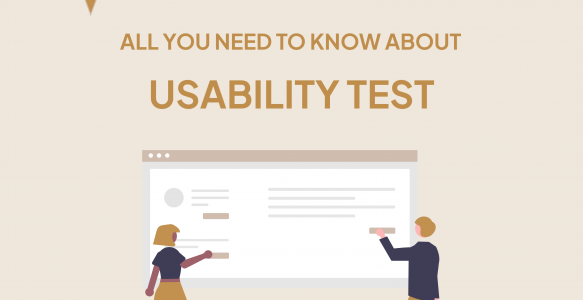What is Usability Test
Qualitative vs. Quantitative
Usability testing can be either qualitative or quantitative.
Qualitative usability testing focuses on collecting insights, findings, and anecdotes about how people use the product or service. Qualitative usability testing is best for discovering problems in the user experience. This form of usability testing is more common than quantitative usability testing.
Quantitative usability testing focuses on collecting metrics that describe the user experience. Two of the metrics most commonly collected in quantitative usability testing are task success and time on task. Quantitative usability testing is best for collecting benchmarks.
The number of participants needed for a usability test varies depending on the type of study. For a typical qualitative usability study of a single user group, we recommend using five participants to uncover the majority of the most common problems in the product.
Remote usability tests
Create a checklist of items you’ll need for the interview, such as a computer, a printed list of questions, or paper and a pencil. If you’re using new equipment or technology during the interview, make sure you know how it works in advance.
Research the users
It is popular because they often require less time and money than in-person studies. There are two types of remote usability testing: moderated and unmoderated.
Remote moderated usability tests work very similarly to in-person studies. The facilitator still interacts with the participant and asks her to perform tasks. However, the facilitator and participant are in different physical locations. Usually, moderated tests can be performed using screen-sharing software like Skype or GoToMeeting.
Remote unmoderated remote usability tests
Do not have the same facilitator–participant interaction as an in-person or moderated tests. The researcher uses a dedicated online remote-testing tool to set up written tasks for the participant. Then, the participant completes those tasks alone on her own time. The testing tool delivers the task instructions and any followup questions. After the participant completes her test, the researcher receives a recording of the session, along with metrics like task success.
On the other hand, more-expensive research is sometimes required, and the cost can run into several hundred thousand dollars for the most elaborate studies.
Things that add cost include:
-competitive testing of multiple designs
-international testing in multiple countries
-testing with multiple user groups (or personas)
-quantitative studies
-use of fancy equipment like eyetrackers
-needing a true usability lab or focus group room to allow others to observe
-wanting a detailed analysis and report about the findings.
Your goal is to create designs that work for all types of users, so learning from a diverse pool of research participants is key. Before you conduct your first usability study, keep these five best practices in mind: get comfortable, put people first, don’t skip the paperwork, communicate clearly, and ask the right questions.
A usability lab is a place with equipment for conducting a usability study, like screen recorders, eye-tracking devices, and computers or mobile devices set up specifically for testing. For usability studies conducted online, communicate whether you’re recording the participants or their screens, and let them know that the recordings will only be used for research related to your test.
Recruit participants who use the assistive technologies you want to involve in your study. For example, seek out participants who use:
-Screen readers
-Closed captions
-Switch devices
-Keyboard-only navigation
-Magnification devices or magnified screens
-Any other assistive technologies that will provide insights about your UX design



